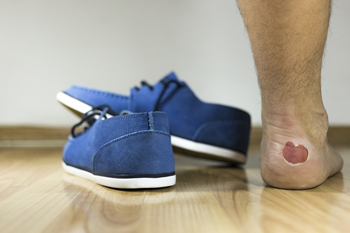
Blisters on the legs and feet form when friction, heat, or pressure damages the outer layer of skin. Common causes include wearing ill-fitting shoes, extended periods of walking or running, and repetitive rubbing from socks or braces. Excessive moisture, burns, or certain skin conditions can also increase the likelihood of blister formation. These fluid-filled sacs act as the body’s natural cushion to protect the skin underneath, but can become painful and prone to infection, if not cared for properly. Treatment begins with protecting the blister by covering it with a clean dressing or blister pad. It is best not to puncture the blister, as this raises the risk of infection. If the blister bursts naturally, cleanse the area gently, apply an antibiotic ointment, and cover it again. For recurring or slow-healing blisters, it is suggested that you see a wound care specialist for evaluation and professional treatment.
Why Blisters Can Be Risky for Leg and Foot Health
Blisters are small pockets of fluid that form beneath the skin, often as a result of friction, pressure, or burns. On the feet, ankles, and legs, they are particularly common because these areas endure daily stress from walking, running, and wearing shoes. While many blisters are minor, they can become serious if not treated correctly, especially in individuals with diabetes or poor circulation.
Friction is the most common cause of blisters. Shoes that are too tight, too loose, or not properly cushioned may rub against the heel, toes, or sides of the foot, leading to painful fluid-filled bubbles. Activities such as hiking, sports, or even long periods of standing can also trigger blisters, especially when combined with moisture from sweat.
Other blisters may form from burns, allergic reactions, or underlying medical conditions. On the lower extremities, blisters that break open expose the skin to bacteria, increasing the risk of infection and complicating the healing process. If a blister appears on the ankle, heel, or shin, it may interfere with walking and daily mobility.
Proper care begins with protecting the blister. Keeping the area clean, covered, and free from further friction supports healing. However, large, painful, or recurrent blisters often require professional evaluation. For patients with compromised circulation or nerve damage, even a small blister can turn into a much larger problem if ignored.
A wound care specialist can determine the cause, provide safe drainage if needed, and apply advanced dressings to promote recovery. They can also recommend changes in footwear, activity, or skin protection strategies to prevent future blisters.
If you have developed a blister on your foot, ankle, or leg that is not healing or is becoming more painful, make an appointment with us as soon as possible.
